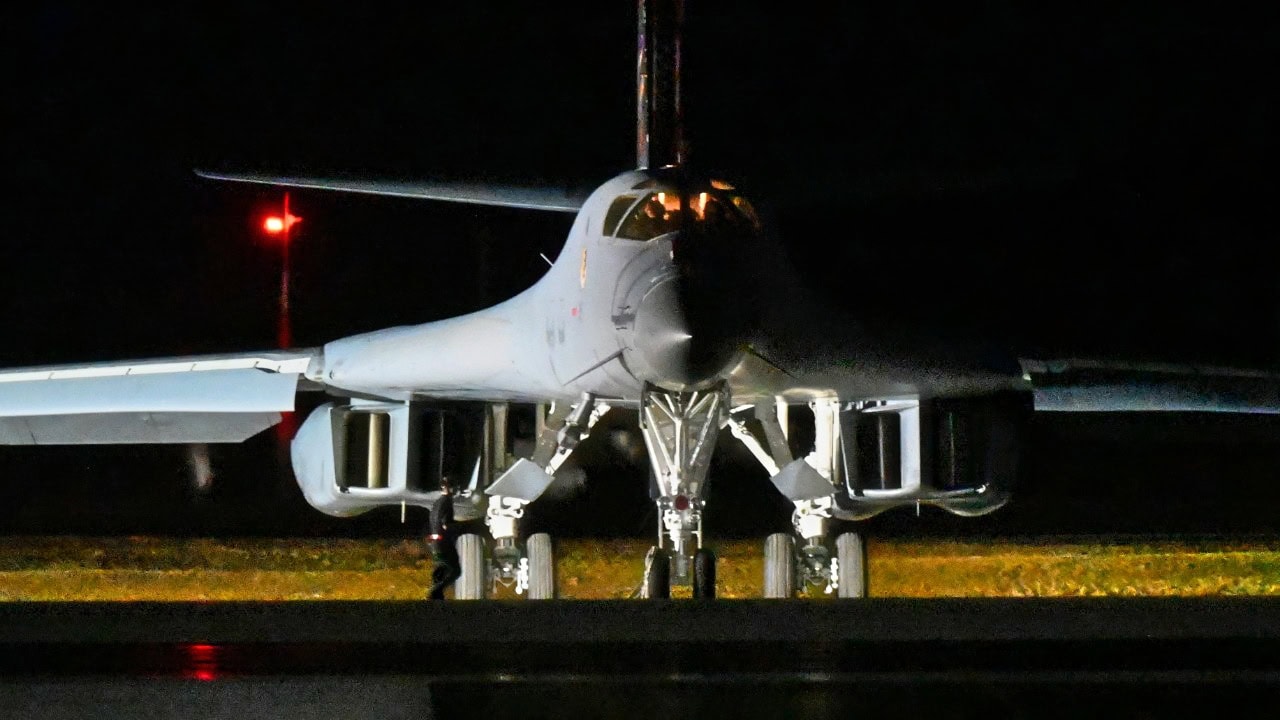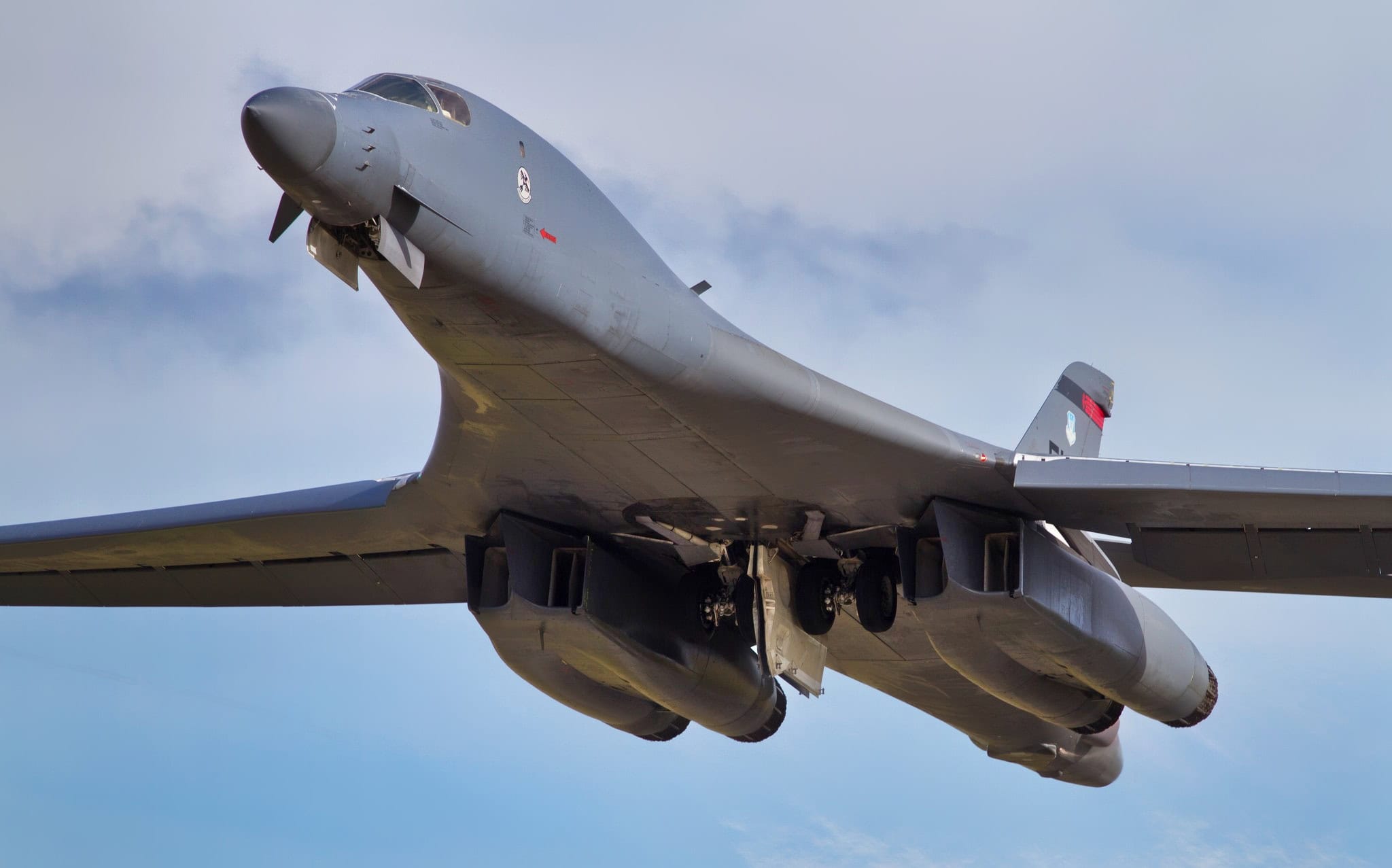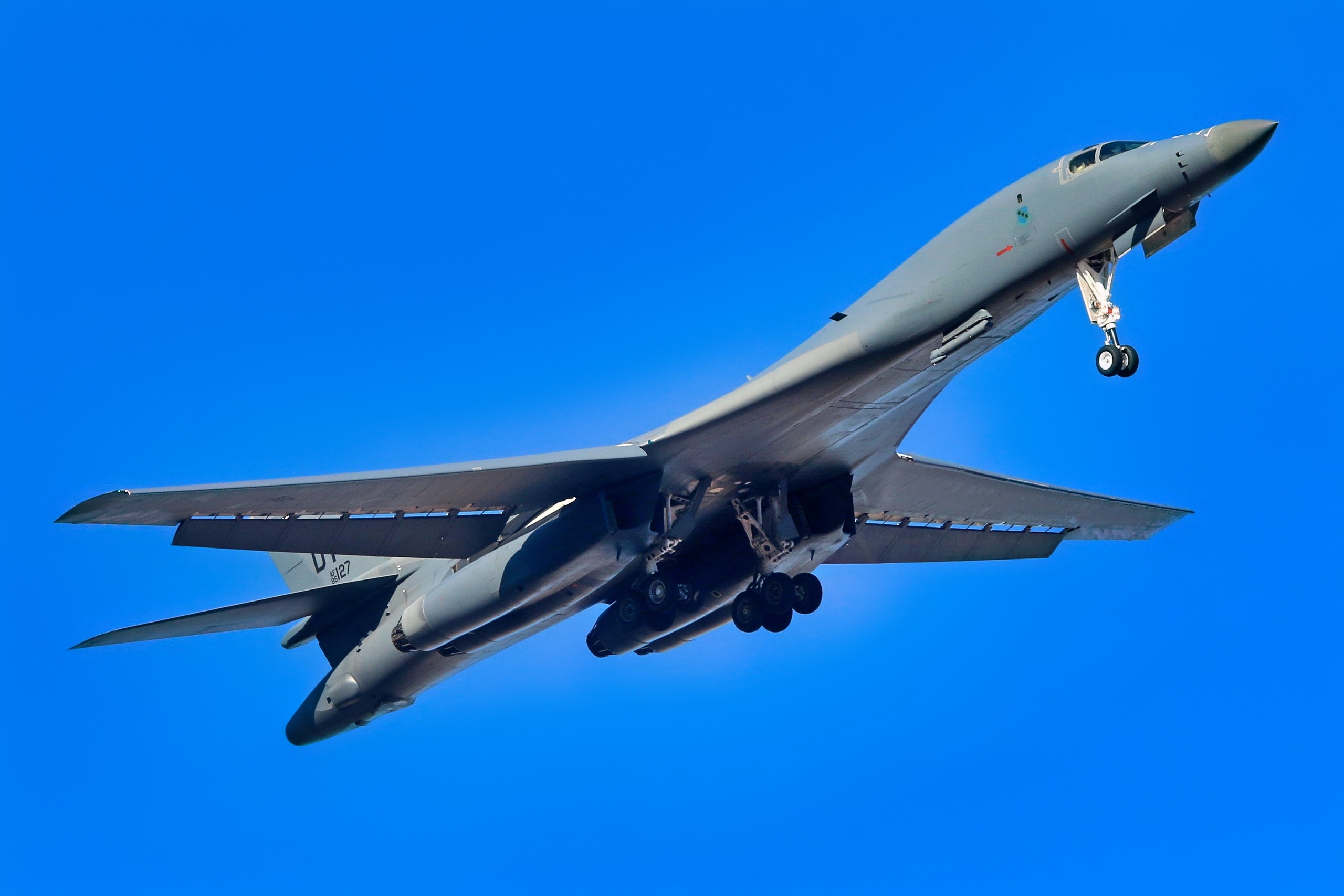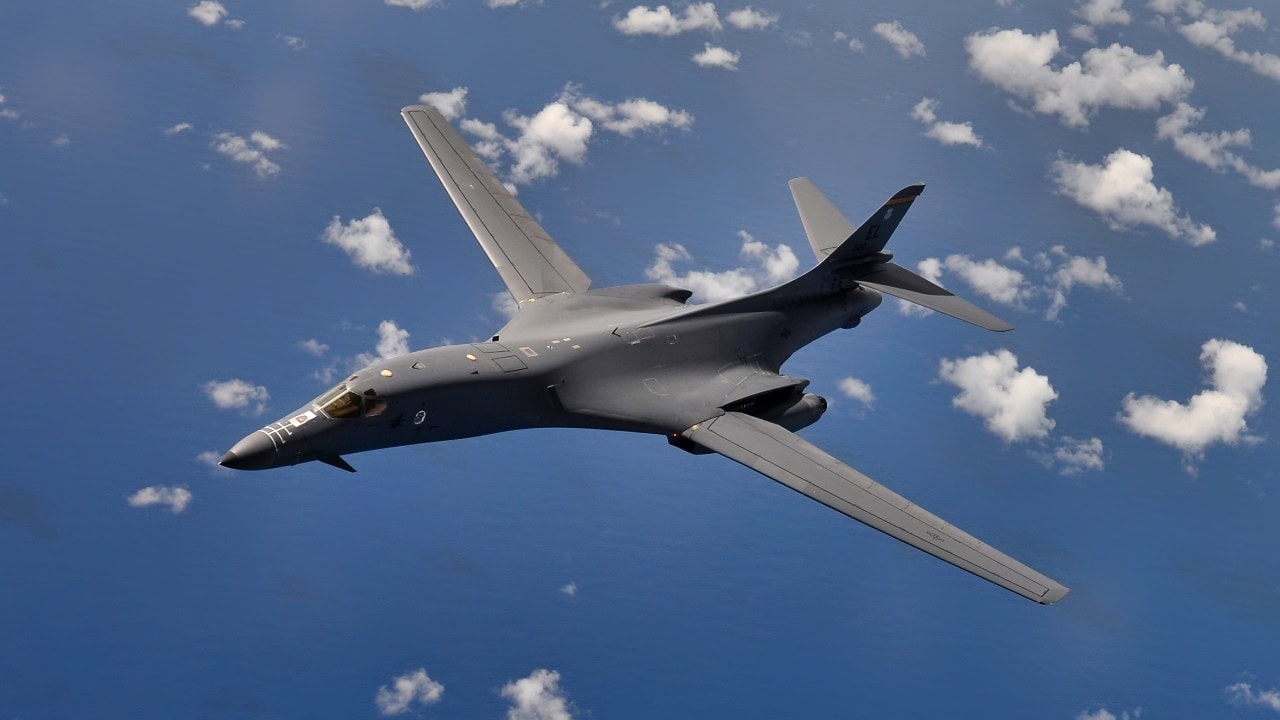Summary and Key Points: The U.S. Air Force has deployed B-1B Lancer bombers to Misawa Air Base in Japan, marking the first-ever bomber task force rotation involving Japan.
-These bombers conducted training flights over South Korea, provoking objections from North Korea and serving as a deterrent signal against Chinese and North Korean aggression.

A U.S. Air Force B-1B Lancer assigned to the 34th Expeditionary Bomb Squadron, Ellsworth Air Force Base, S.D., runs final checks before takeoff of a training mission in support of Bomber Task Force 25-1 at Andersen Air Force Base, Guam, Feb. 24, 2025. The BTF missions are designed to showcase the Pacific Air Force’s ability to deter, deny, and dominate any influence or aggression from adversaries or competitors. (U.S. Air Force photo by Tech. Sgt Robert M. Trujillo)
-Such rotations are intentionally unpredictable, keeping adversaries off balance while demonstrating U.S. commitment to regional security.
-Although the B-1Bs lack stealth capabilities, their strategic forward deployment emphasizes readiness and reinforces America’s Indo-Pacific presence. The rotation underscores U.S. resolve amid rising tensions, paving the way for future deployments of stealth-capable B-21 Raider bombers.
The U.S. Sends B-1B Bombers to Japan in Show of Strength and Deterrence:
The United States is showing the power of its Air Force in East Asia. Heavy bombers have headed to the Indo-Pacific to bolster U.S. power projection and deterrence in the region.
B-1B Lancer bombers deployed to Japan and landed at Misawa Air Base on April 15. The B-1Bs also flew over South Korea for a training mission that irked North Korean leader Kim Jong Un, who took it as a personal insult and as evidence that the United States and South Korea have plans to bomb the North.
B-1B Lancer: Rotating Bomber Task Force to Keep China and North Korea Guessing
The B-1B Lancers are from Dyess Air Force Base in Texas. The Air Force characterized their deployment as a bomber task force rotation, and it is the first such mission ever to include Japan. Bomber task forces have been around since 2018, and they are taking on more significance as Chinese and North Korean aggression increases.
The idea behind the task forces is to deploy bombers in inconsistent, unpredictable ways. The lack of a steady pattern keeps enemies guessing where they will crop up next. The B-1B flight over South Korea surprised Kim and showed him that the United States and its allies are not afraid to operate freely over the Korean Peninsula.
Where Will the Bombers Show Up Next?
Bomber task force rotations have exemplified U.S. tactics, operational art, and strategy in the Indo-Pacific over the last six years. There have been deployments to Guam, Australia, and Diego Garcia, and the missions the bombers perform are as varied as the locations are diverse.
The task forces demonstrate that the Air Force can bring enough power to overawe the Chinese, and they do it without giving away clues about future stationing.
U.S. Bombers Landing in China’s Neighborhood
U.S. bombers sometimes use Japan to make emergency landings. A B-52 was forced to land for repairs at Yokota Air Base in April 2024. A B-1B diverted to Yokota for a “hot pit” refueling in February this year.
But this is the first full rotation in Yokota for the B-1Bs, and it places the bombers in the First Island Chain, where the Chinese make many territorial claims. Beijing considers control of this geographical area to be critical, and China is never happy when the U.S. Navy or Air Force deploy in its near-abroad.
China hasn’t seen such a long-term deployment of bombers in Japan since the Vietnam War, when B-52s were stationed at Kadena Air Base on Okinawa.
“BTF 25-2 showcases the U.S. commitment to deterring threats and maintaining regional stability,” Lt. Col. Christopher Travelstead, director of operations for the squadron, said. “These missions in the Indo-Pacific ensure our B-1 crews are highly trained and ready to respond anytime, anywhere, to defend U.S. interests and support our allies, securing a stable Indo-Pacific—where all nations operate freely under a rules-based order while promoting global peace and prosperity,” Travelstead added, according to an Air Force news release.
Looking Forward to the B-21 Raider
The B-1B bombers are nice to have in forward-deployed positions. They are nuclear-capable and fearsome airplanes—but they are not stealthy. The Air Force is looking forward to basing the B-21 Raider stealth bomber in the Indo-Pacific as part of a future rotation.
But this may not happen until at least 2030, which means the non-stealthy B-1Bs have to carry the load for now. Despite the lack of stealth, they should be more than able to fulfill this role until the B-21s are ready. B-2s are, of course, stealthy, and six of those bombers are deployed at Diego Garcia in the Indian Ocean for operations in Yemen, contingencies with Iran, or helping Israel deal with Hezbollah and Hamas in the Levant.

B-1B Lancer. Image Credit: Creative Commons.
This shows that the Trump national security team is thinking ahead to potential flashpoints in the Middle East and the Indo-Pacific. The bomber strategy gives clues to U.S. Secretary of Defense Pete Hegseth’s thinking regarding the aerial force structure.
He has a new undersecretary of policy, Elbridge Colby, who is known for wanting to prioritize East Asia and blunt the power of China. Colby will issue a new defense strategy for the Trump administration as soon as possible, and it likely will call for the United States to keep its bomber fleet forward-deployed for better deterrence. The bomber order of battle could be part of a broader nuclear strategy, too.
China and North Korea have taken notice. North Korea hates any type of joint training between the Americans and the South Koreans. Trump is showing that he doesn’t mind ruffling some feathers there. China is smarting from ultra-high tariffs from Trump, and Chinese President Xi Jinping will likely tell other Asian nations that it is the United States who is the aggressor that is willing to spark a trade war, and even a shooting war. Xi is trying to conduct a charm offensive in the region to promote better relations with countries in its near-abroad.

B-1B Lancer. Image Credit: Creative Commons.
The United States seems unconcerned with Xi’s diplomatic outreach, and by deploying bombers shows it is willing to match Chinese military might in Beijing’s own backyard. Stationing B-1B bombers in Japan is an audacious move amid the trade war. China will likely run more air and naval exercises around Taiwan as a response.
We’ll see how long the B-1Bs stay in Japan and where the next bomber task force will go. It will likely be another surprise for Xi and Kim.
About the Author: Dr. Brent M. Eastwood
Brent M. Eastwood, PhD is the author of Don’t Turn Your Back On the World: a Conservative Foreign Policy and Humans, Machines, and Data: Future Trends in Warfare plus two other books. Brent was the founder and CEO of a tech firm that predicted world events using artificial intelligence. He served as a legislative fellow for U.S. Senator Tim Scott and advised the senator on defense and foreign policy issues. He has taught at American University, George Washington University, and George Mason University. Brent is a former U.S. Army Infantry officer. He can be followed on X @BMEastwood.

